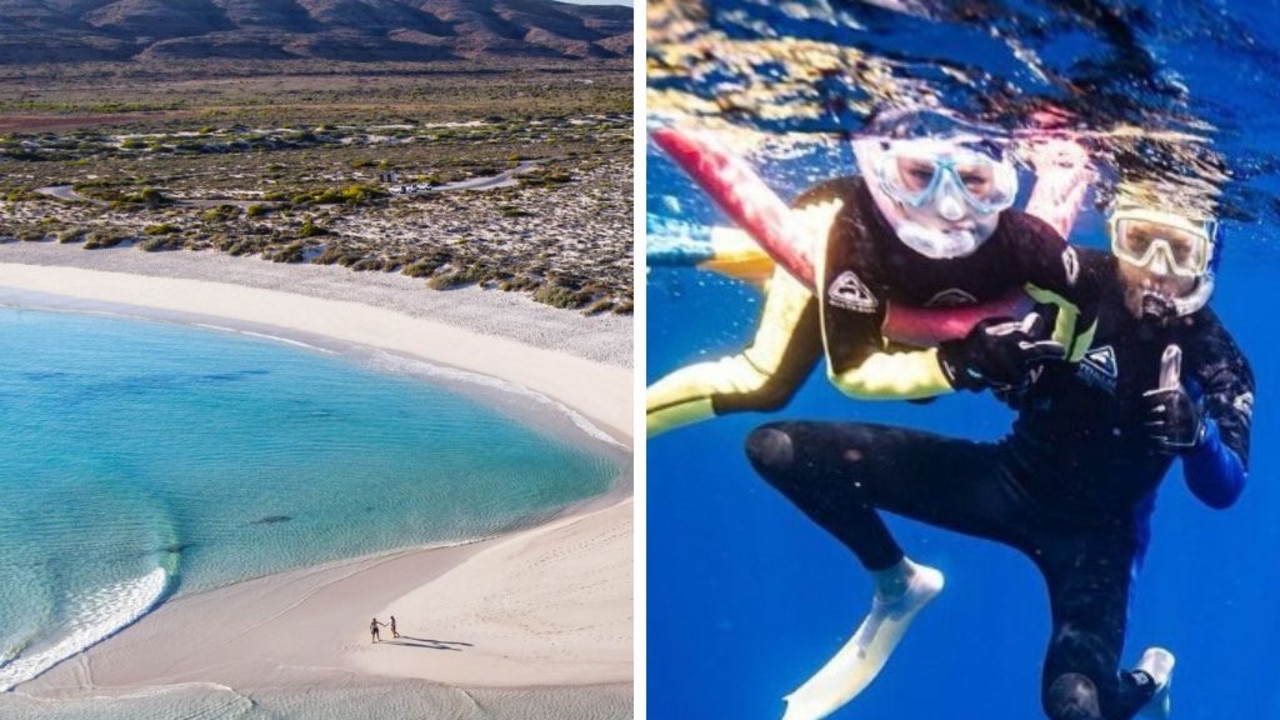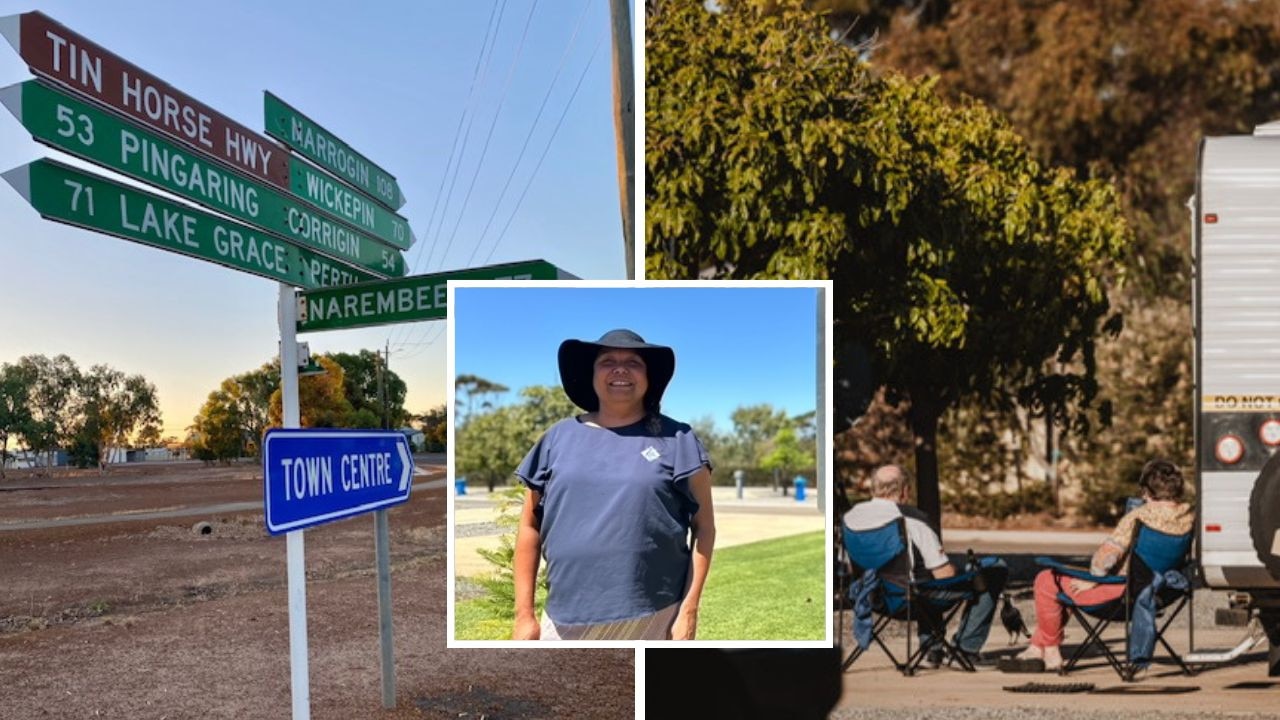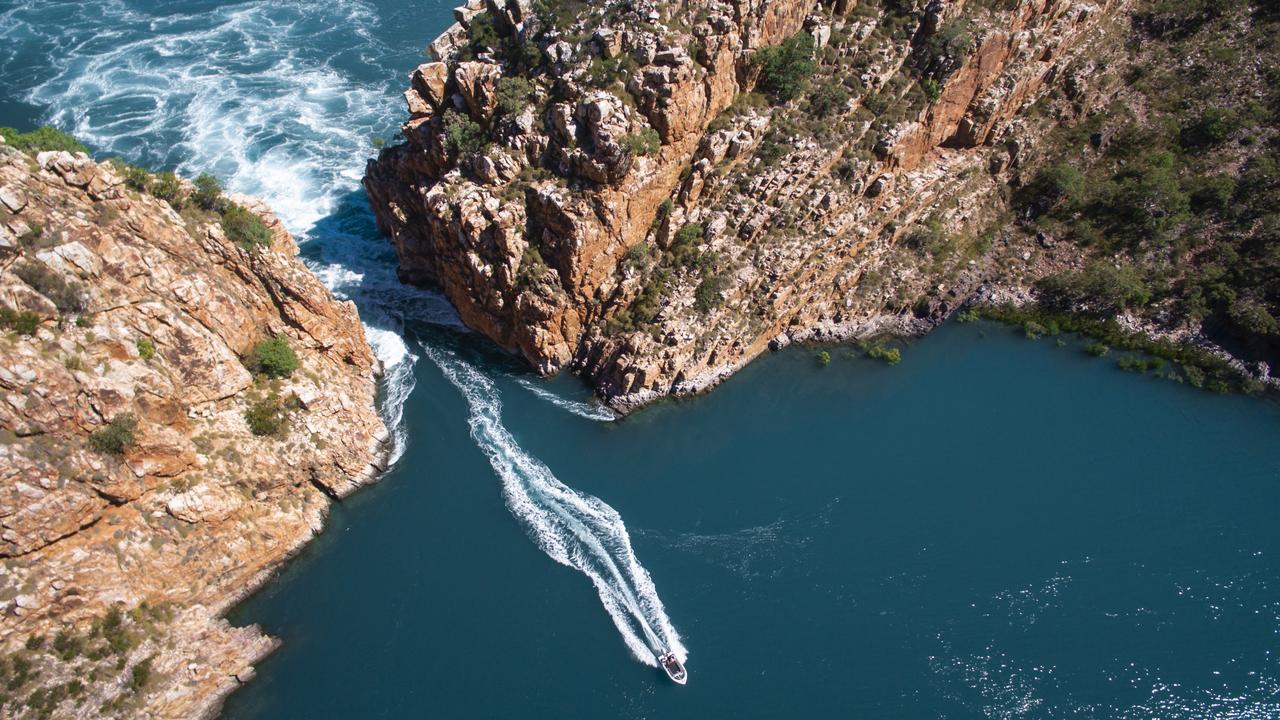Kimberley dreaming
NOTHING you've read about the Kimberley in Australia's northwest, no photographs you've seen, prepares you for your first glimpse of its ragged sandstone coast.

NOTHING you have read about the Kimberley in Australia's northwest, no photographs you've seen, nothing you've been told, prepares you for your first glimpse of the ancient red sandstone that dominates its extraordinary ragged coastline.
That first glimpse can take your breath away – the variety of rock formations, twisted, broken and crunched into an amazing assortment of shapes in this northwest frontier shimmering under the tropical sun.
They burn an image into your brain that you are never likely to forget.
A lone brahminy kite circles overhead, a crocodile can be spotted basking on the rocks, apparently oblivious to the energy-sapping heat still felt in late autumn with temperatures towards 40C each day.
Occasionally, fish that lure anglers to try their luck in these amazingly clear blue waters break the surface.
The towering cliffs, reflecting colours of red, brown, even yellow, stand like ancient sentinels in this isolated, under-populated part of Australia which has just 35,000 inhabitants in three towns, where landscapes haven't changed in centuries.
Growing numbers of overland tourists are discovering the interior of the Kimberley – covering an area of about 421,000sq km, almost twice the size of New Zealand.
It's a must-see destination now for the myriad grey nomads who've ticked off Cairns, the Daintree, Cape York, Uluru and Tasmania from their do-before-you-die list.
But it's conceded that the only way to see the distinctive Kimberley coast, most of it inaccessible to land-based visitors who've pushed their four-wheel-drives through some demanding motoring, is from the sea.
How privileged we are, then, to be enjoying at the end of one of the best wet seasons in recent years, this natural wonderland of eerie rock formations, rugged cliffs, raging waterfalls, fast-flowing rivers and remarkable tide movements – all from the comfort and luxury of an airconditioned suite aboard the MV Orion, purpose-built to carry 106 cruise passengers.
"You're going to see Antarctica, without the ice," says Robin West, the Orion's South African-born expedition leader who leads a team of four skilled guides, including Darwin-born naturalist and rock art authority Darrin Bennett, on this voyage that lives up to Orion's promise of taking passengers "on a path less travelled".
West, whose comparison with Antarctica proves remarkably apt, is briefing the complement of some 80 passengers – about a third repeat Orion customers – who've joined the ship on the first of this year's expeditions to the Kimberley, a 10-day voyage across the Timor Sea from Darwin to Broome (the sunset over Cable Beach really is all it's cracked up to be) and back, with stops at some of the simply stunning natural wonders in this isolated Australian icon.
For the past three years, the luxurious Orion has been bringing visitors to this little-seen part of Australia during the dry season from April to September.
West stresses that Orion is an expedition ship, as distinct from a conventional cruise liner. But you shouldn't be deterred from an Orion experience, as the onshore expeditions are fun, streamlined and efficient, with knowledgeable guides keen to share information about whatever it is you're being shown, from mysterious indigenous rock art to flora and fauna.
Expedition staff are always first on to shore to ensure no hungry crocodiles are lurking nearby. They also erect a huge Orion-blue beach umbrella to provide shade, and carry stocks of fresh towels to dry feet after a wet landing, as well as water and juice for the passengers.
You're also given silver-service treatment on the ship.
The daily touring program is designed so you don't miss a meal on board, and who would want to, when the meals – breakfasts and lunches served on the teak-covered deck, dinners, often themed, in the plush Constellation restaurant or on deck under the stars – are of superb quality and there's a variety of afternoon and evening entertainment as well as satellite TV and movies in your cabin, all equipped with flat-screen TV and DVD/CD player.
There's a fully stocked library on board if you can find time to read.
The almost daily 4.30pm trivia quizzes prove a must-do shipboard activity, and a cruise highlight is the concert presented by the crew, with a smattering of Filipino traditional music and dances among the more familiar American ballads.
Launched from a construction yard in Germany in late 2003, with a hull strong enough to allow her to move through the icy Antarctic during summer expeditions, a feature is the 10 Zodiac inflatables that allow the cruise to become an expedition.
These roomy transporters allow passengers to leave the ship wherever Orion's German-born captain Svent Gaertner chooses to drop anchor when there is no wharf handy.
Apart from giving us access to otherwise inaccessible parts of the Kimberley's coast, the diesel-powered Zodiacs, driven by members of the Orion's mainly Filipino crew, also carry Orion passengers into hard-to-get spots of Antarctica, Papua New Guinea and New Zealand during the ship's all-year expedition cruising program.
When you travel with Orion, you're pre-warned about the "wet" landings that are part of the novelty of this expedition ship.
Everyone travelling in the Zodiacs has to wear a special inflatable lifejacket, with the rule rigorously policed before each expedition leaves what we quickly look on as our "mother ship".
Your cruise details sent out in a zippered leather wallet come with valuable tips about what clothes etc to bring on your holiday.
These include suggestions about the most suitable footwear needed so you can get off a Zodiac into shallow water at a beach. Crocs or the cheaper Rivers version of the plastic sandals prove the most versatile.
I stuck with sandshoes, but would go with Crocs or something similar for any future "expedition cruising" because wet sandshoes are difficult to get in and out of when you hit the beach ready for a walking excursion to see the area's famous rock art.
It's amazing how irritating sand around your heels can become on a 20-minute trek over rock boulders and when climbing bush-covered hills.
Viewing most of the art at places such as the Gwion Gwion or Bradshaw art found on Jar Island, and the distinctive Wadjina art on Bigge Island, requires a bit of effort but the walking shouldn't trouble anyone in reasonable physical shape, and you're constantly reminded to bring plenty of the free bottled water that's provided in your cabin refrigerator or from the Eskies always found at the Zodiac base at the ship's stern.
While the expedition aspects of the voyage are paramount, with briefings each night on the next day's activities, Orion could lure me back simply for the dining.
The nightly dinner menus are devised by the celebrated Sydney Bathers' Pavilion chef, French-Canadian Serge Dansereau, who shared part of this trip with his wife and young family, and ensure remarkable dining diversity.
Take the Zodiac shore excursions offered on a Kimberley experience, clamber over sandy beaches and rocks, and you just might avoid suffering that cruise hazard of extra kilograms at the end of the voyage.
Tested by the torrid temperatures ashore, you can always recover in the airconditioned lounges fore and aft, and take high tea in the Galaxy lounge above the ship's bridge, affording 180-degree views of what's outside the ship.
Dansereau's menus, supervised by the ship's executive chef Lothar Greiner and his team, (who also provide a memorable degustation gourmet dinner during the voyage, are hard to resist.
Orion's perennially cheerful staff – with the ratio of passengers to crew almost one-on-one on our voyage – know a lot about hospitality.
With my eyes stinging from perspiration in this 39C-plus heat, can this be a mirage, or is it really the Orion's distinctive blue beach umbrella coming into view?
Yes. Waiters from the ship are moored in an inflatable Zodiac handing out ice creams to grateful passengers in the fleet of inflatables that have taken us through the mangroves of the Hunter River while other passengers have taken the optional extra helicopter trips ($440 per person) for scenic flights over the Mitchell Falls.
These surprises recur during our wilderness experience. None of us will forget in a hurry the cups of tropical rum punch dispensed by willing crew who'd beached their Zodiac on a sand bar to greet us travelling back to the mother ship from Montgomery Reef and Raft Point where we'd watched the phenomenon of extraordinary tidal movement that leaves metres of reef exposed in the ocean.
After a 12km trek up the King George River on our homeward leg from Broome, we experienced the spectacle of the raging twin King George Falls, which fall 100m from the Gardner Plateau, delighting in the cooling spray that swept through our transport, the ship's small tender.
Tucked away near the sheer canyon walls that line the river were the ever-smiling crew again, this time carrying a welcome cargo of fresh-baked croissants filled with ham and cheese, and orange and champagne cocktails, providing an unforgettable morning tea experience in the Kimberley.
If you have to go, can there be a better way to go?
Des Partridge was a guest of Orion Expedition Cruises.



